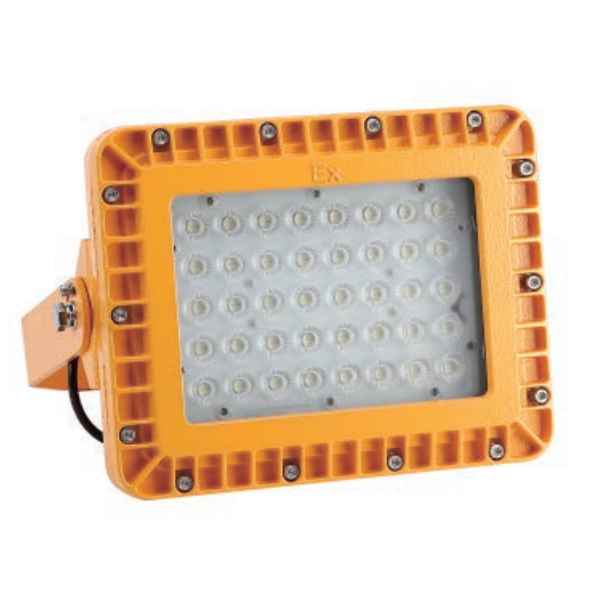In recent years, due to the rapid development of LED technology, the main performance indicators have been greatly improved. However, the industrialization level of the luminous efficiency of LED devices has reached 110~130lm/W, which can be used as a light source in the lighting field. At present, the light decay of products sold by many manufacturers drops sharply after more than one year.The diffuser plate, silicone ring, thermal silica gel, reflective paper, electronic wire and other accessories used in LED lamps also affect the light decay of the product.

Influence of diffuser plate on light decay
According to the classification of optical principles, diffuser plates are divided into two types: 1) Diffuser plates that increase the beam angle; 2) Diffuser plates that maintain the original angle.
According to the material classification, the diffuser plate is divided into two types: 1) PMMA and PC diffuser plates are suitable for LED lighting fixtures with direct light sources; 2) PS diffuser plates are suitable for side light source LED lighting fixtures.
The light decay of LED finished lamps with diffuser plate design is greater than that without diffuser plate.
Analysis and calculation of parameter measurement data of finished LED lamps with and without diffuser plate
| Item | Luminous decay coefficient% | Luminous flux maintenance rate% | Lighting time H | Lighting 30,000 Luminous flux maintenance rate% |
| Without diffuser plate | -3.86 | 96.14 | 2736 | 57.62 |
| With diffuser plate | -13.06 | 86.94 | 2736 | -43.19 |
The impact of silicone rings on the light attenuation of finished LED lamps
Silicone ring is a kind of sealing ring, which is a kind of rubber material. Because of its special properties, wide temperature range and excellent chemical properties, it is often used for wire protection and sealing and waterproofing of LED finished lamps. LED finished lamps designed with sulfur-containing silica gel rings have greater light attenuation than LED finished lamps designed with sulfur-free silica gel rings.
Analysis and calculation of parameter measurement data of LED finished lamps designed with sulfur-containing silica gel ring and sulfur-free silica gel ring
| Item | Luminous decay coefficient% | Luminous flux maintenance rate% | Lighting time H | Lighting 30,000 Luminous flux maintenance rate% |
| Sulfur-free silicone ring | -5.21 | 94.79 | 840 | -86.25 |
| Sulfur-containing silicone ring | -6.14 | 93.86 | 840 | -119.19 |
The influence of thermally conductive silica gel on the light decay of finished LED lamps
Thermally conductive silicone is a high-end thermally conductive compound, which is mainly used for filling the gap between the heating surface of the LED light source and the contact surface of the heat sink.
Analysis and calculation of parameter measurement data of LED finished lamps designed with thermally conductive silica gel and without thermally conductive silica gel
| Item | Luminous decay coefficient% | Luminous flux maintenance rate% | Lighting time H | Lighting 30,000 Luminous flux maintenance rate% |
| Without thermal silica gel | -3.86 | 96.14 | 2736 | 57.62 |
| With thermally conductive silicone | -5.6 | 94.4 | 2736 | 38.65 |

The impact of reflective paper on the light decay of finished LED products
Adding reflective paper to the design of finished LED lights is one of the ways to improve the lighting effect of LED finished products. Reflective paper has good processing properties and can be formed by cutting, stamping, bending, heating, etc., and is widely used. The light attenuation of finished LED lights designed with reflective paper is greater than that without reflective paper.
Analysis and calculation of parameter measurement data of LED finished lamps designed with reflective paper and non-reflective paper
| Item | Luminous decay coefficient% | Luminous flux maintenance rate% | Lighting time H | Lighting 30,000 Luminous flux maintenance rate% |
| Without reflective paper | -3.86 | 96.14 | 2736 | 57.62 |
| With reflective paper | -5.85 | 94.15 | 2736 | 38.65 |
The impact of electronic wires on the light decay of finished IED products
The electronic wires used in LED finished lights mainly include silicone wires and PVC wires. The processing methods of silicone wire and PVC wire are different. The temperature resistance of PVC wires is 105°C, while the rated temperature of silicone wires is relatively high, which can basically reach 150~300°C, and the rated voltage is around 600V. Silicone rubber is used as the insulating material, and the insulation thickness is 3. It has good acid, alkali and antifungal properties, can withstand hot and humid environments, and is resistant to polyester and grease. LED finished lamps designed with PVC wires and silicone wires have greater light attenuation.
Analysis and calculation of parameter measurement data of LED finished lamps designed with PVC wire and silicone wire
| Item | Luminous decay coefficient% | Luminous flux maintenance rate% | Lighting time H | Lighting 30,000 Luminous flux maintenance rate% |
| PVC wire | -5.61 | 94.39 | 2736 | 38.52 |
| Silicone wire | -4.25 | 95.75 | 2736 | 53.28 |
Summarize
LED finished lamps are designed with diffusion plates and non-diffusion plates, sulfur-containing silica gel rings and sulfur-free silica gel rings, thermally conductive silica gel and droppers. Therefore, in the design and production process of finished LED lamps, do not use materials containing sulfur and incompatible chemical components in their chemical composition to avoid the rapid light decay of the LED light source in the finished LED lamp. Compared with similar products on the market, Bozhou Ship’s products pay more attention to the light attenuation of the product, and the materials used are more reasonable and high-quality than other manufacturers. With multiple production lines, we can use different materials and technical processes to provide customers with products at different price points.





